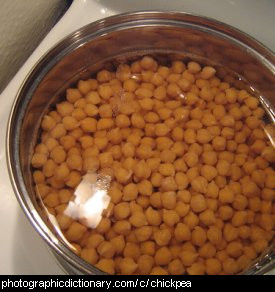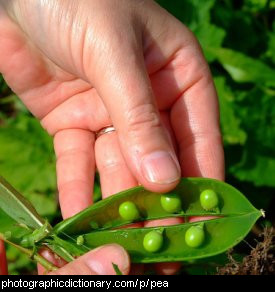Scientific name: family: fabaceae or leguminosae
Scientific name: cicer arietinum
The chickpea, also called garbanzo bean or Indian pea, is a legume that is widely used in the Middle East and India.
Chickpeas can be soaked overnight and cooked whole, and eaten plain, in a salad, or as part of a stew or curry. They can also be ground into flour and used for baking. They are the main ingredient of falafels and hummus.
Scientific name: lens culinaris
Lentils are a pulse, which means they grow seeds in pods like beans and peas but they are harvested when the seeds are dry. Beans and peas that are not picked fresh but are left to dry out first are also called pulses.
Lentils are eaten all over the world, and are good food for people who do not eat meat. They can be made into soup, stews and curries. They cannot be eaten raw, and need to be cooked before you can eat them. If you soak lentils overnight before you cook them, they are easier to digest.
Scientific name: pisum sativum
Scientific name: arachis hypogea
The peanut is not a true not and, in fact, related to the pea - they are both legumes. Peanuts develop in a pod, like peas, with 1-4 peanuts in each pod. The pods force themselves underground to mature. Peanuts are usually sold in shops removed from their shell, roasted and salted. Peanuts are also frequently ground into a fine paste called peanut butter which is good to eat on sandwiches with jam or jelly.
Some people get a violent allergic reaction to eating peanuts, called anaphylactic shock, which can kill them. As this allergy is more common in children and more children each year are being found to have it, peanuts are often banned in schools.
The peanuts in the picture are unopened, still in their shells.






